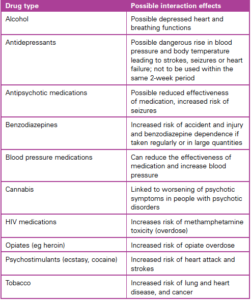Treatment Approaches for Users of Methamphetamine: A Practical Guide for Frontline Workers
Tailored toward frontline workers and harm reductionists, this comprehensive practical guide synthesizes research, national and international guidelines and expert opinions to inform best practices for working with folks who use methamphetamine and can be extrapolated to inform service provision for working with gay, bisexual, and other men who have sex with men (GBMSM) who PnP.
Broadly, this guide covers harm reduction, managing intoxication, overdose and withdrawal, the intersections of methamphetamine use and mental health, potential interaction effects, various treatment approaches and guidelines for establishing care partnerships, spanning across 11 chapters. A particular strength of this guide is that chapter 1 takes the time to comprehensively introduce methamphetamines for providers who might be less familiar, covering various forms, effects on the brain, long-term implications and risks and harms.
Similarly, chapter 8 reviews the range of treatment options for providers who might be less familiar, including considerations for CBT, brief interventions, residential rehabilitation, self-help groups and behavioural therapy. However, a shortcoming of this section is that it overemphasizes CBT and abstinence-only approaches, which may not parallel the needs of all GBMSM who PnP. Regardless, this chapter highlights the importance of providing culturally relevant care that is sensitive to the needs of Black, Indigenous and People of Colour (BIPOC) clients, and as well, reaffirms the importance of providing a safe, reassuring, supporting and non-judgemental environment.
Similarly, chapter 2 underscores the significance of implementing a harm reduction approach in practice, encouraging proper nutrition and rest periods between use, for instance. Moreover, the details provided in chapter 7 surrounding potential interactions between methamphetamine, alcohol, cannabis and other psychostimulants are especially relevant, as holding knowledge about the ways in which various substances may interact is important for best supporting GBMSM in using safely.

Finally, chapter 11 recognizes the importance of service partnerships, underscoring the importance of a provider being well-connected with other local services that work to support GBMSM who PnP. By bolstering these networks, providers can facilitate in-timely and appropriately targeted responses to a client’s needs, in turn, ensuring a client stays linked to relevant and supportive care.
Jenner, L., & Lee, N. (2008). Treatment Approaches for Users of Methamphetamine: A Practical Guide for Frontline Workers. Australian Government Department of Health and Ageing, Canberra.
